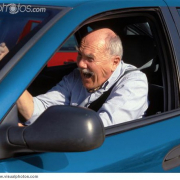Utah Bicycle Laws
Parent Duty with Respect to Child Bicyclist
A parent or legal guardian must not knowingly allow any child to break any provisions of the traffic code pertaining to bicycles on the road.
Motor Vehicle Rules Applicable to Bicycles
A rider of a bicycle must follow the same laws and codes applicable to operators of motor vehicles, and has the same rights on the roadway as well. A bike rider must ride in the same direction as moving traffic. Bike riders may not ride more than two people wide, unless they are on a path or part of a road reserved for just bicycles.
All riders of bicycles must not interfere with the motion of traffic, and must ride in a single line. If riding on a designated path adjoining the public roadway, the bike rider must follow all traffic-control devices and directions.
Bicycle Passengers/Other Vehicles Attached to Bicycle
A bicycle cannot carry more persons at a time than it is designed to. But an adult may carry a child that is securely fastened to the rider in a backpack or sling.
- Other Vehicles Attached to a Bicycle
A bike rider may not attach any other person or vehicle to the bicycle for transportation on a public road, except for a trailer that is designed for attachment to the bicycle.
Duty of Bicyclist to Operate on Right-Hand Edge of Road
A person riding a bicycle on a public road at less than the speed of traffic should ride as near as possible to the right-hand edge of the road except when:
- Passing a bicycle or other vehicles going in the same direction
- Preparing to turn left at an intersection or onto another road or driveway
- Riding through an intersection that has a right-turn-only lane.
- Necessary to avoid safety hazards, stationary objects, parked vehicles, pedestrians, etc.
Duty of Bicyclist Regarding Sidewalks and Pedestrians
A rider of a bicycle must:
- Yield the right of way to pedestrians
- Give an audible warning before passing a pedestrian
A rider of a bicycle must not operate it in a way so as to perhaps collide with pedestrian, or another person on a bicycle.
A rider of a bicycle must not operate at a speeder greater than is safe and reasonable in current conditions.
Turn Signals Required of Bicycle Operators
A bicycle rider must not turn or change lanes without checking that the way is clear and making the appropriate signal. The signal must be made for at least 3 seconds immediately before beginning the turn.
A bicycle rider must not stop or decrease speed suddenly without giving the correct signal to the rear.
Bicycle Cargo, Handlebars, Sirens, Whistles, and Brakes
A bicycle rider should keep at least one hand on the handlebars of the bike at all times. He or she is not permitted to carry any object in their hands that inhibits the ability to use both hands to operate the bicycle when needed.
A bicycle must not use a siren or whistle. It must be equipped with brakes that allow it to stop in 25 feet when riding at a speed of 10 mph in dry, level conditions.
Bicycle Lamps and Reflective Material
A bicycle must be equipped with the following: a white light on the front of the bicycle that can be seen from 500 feet, a red reflector or tail light on the back of the bicycle that is visible from 500 feet to the back, and other reflective material on each side of the bicycle to be seen from each side at a distance of 500 feet.
Bicycle Racing
Racing of bicycles is not allowed on highways, but there may be exceptions when allowed by state or local government. Approval might be granted in cases where safety for all vehicles is ensured. In these cases, race participants may be exempted from some traffic rules.
Parking of Bicycles
A bike rider may park a bicycle on a sidewalk anywhere unless marked as prohibited. The parked bicycle must not prevent or impede normal sidewalk traffic. A bicycle may also be parked on a road or other marked and designated area where other bicycles are parked.
Common Law Rights and Duties of Bicycle Operators
It is not a matter of law that a bicycle rider is required to be especially cautious, above and beyond a driver of a motor vehicle. A bike rider simply has equal rights on the roadway. But if the rider moves to the wrong side of the road, he or she loses some of those rights. The rider should travel as close as possible to the right-hand edge of the road in almost all cases.
Duty of Motor Vehicle Drivers to Child Bicyclist
All drivers of motor vehicles should keep in mind that a child riding a bicycle cannot be expected to use the same care and knowledge as an adult operating a bicycle. Care should be taken when operating a motor vehicle near a child bicyclist.







